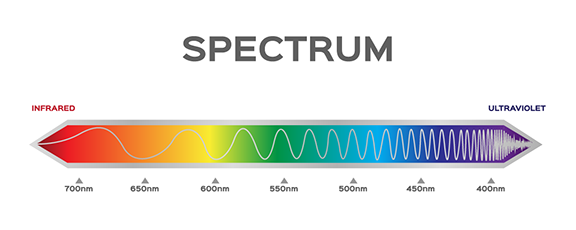Understanding the Power of UV Light to Kill Germs
It has been over 140 years since Downes & Blunt discovered the antibacterial effects of sunlight.
They determined that shorter wavelengths of the solar spectrum were more effective at neutralizing bacteria. It is now known that there are germicidal effects of UV-C, UV-B, UV-A and violet blue light. Violet Defense's technology builds on this research and brings a new patented approach that enables UV and violet blue light to be even more effective and adaptable to every day uses.
KEY BENEFITS OF USING UV LIGHT:
Environmentally-friendly
No chemicals
Affordable
Kills rapidly
Microbial cells cannot develop resistance to this technology
Proven ability to be able to deploy it safely to kill bacteria, mold, fungi, and even viruses
UV Technology Explained
GERM-KILLING LIGHT TARGETS THE DNA & RNA OF MICROBES
DNA & RNA is the genetic material that makes up all living organisms, controlling their growth, development, functioning and reproduction. UV light produces electromagnetic energy that can destroy the ability of microorganisms to reproduce and cause inactivation of microbes by causing mutations and/or cell death.
UV light produces electromagnetic energy that can destroy the ability of microorganisms to reproduce and by causing photo-chemical reactions in nucleic acids (DNA & RNA). The ultraviolet energy triggers the formation of specific thymine or cytosine dimers in DNA and uracil dimers in RNA, which causes inactivation of microbes by causing mutations and/or cell death and failure to reproduce.
BROAD SPECTRUM OF UV LIGHT OPTIMIZES EFFECTS
Violet Defense’s technology represents a significant breakthrough in germicidal protection for the world and is protected by an extensive US and international patent portfolio. Products powered by Violet Defense technology use a powerful, broad spectrum light, including germicidal UV-C, UV-B, UV-A, and violet blue that optimize their germ-killing efficiency.
UV-C (200-280 nm) is most traditionally referred to as germicidal UV with ability to kill bacteria, viruses, mold, and fungi.
While UV-C is most traditionally referred to as germicidal UV, UV-B wavelengths have also demonstrated effectiveness against certain bacteria.
UV-A (320-400 nm) and UV-B (280-320nm) light causes oxidation of proteins and lipids causing cell death.
Broad band UV lamps have also been shown to inhibit photo-reactivation, the process that can result in self-repair of damaged microbes.
ANTI-BACTERIAL PROPERTIES OF VIOLET-BLUE LIGHT
Blue light in the 405 nm to 470 nm wavelengths has been shown to be able to have up to 100% bacterial suppression over the proper intervals.
The blue light causes photoexcitation of endogenous porphyrins that leads to the generation of reactive oxygen species, which are toxic to bacterial cells.
By combining these wavelengths, Violet Defense’s technology maximizes the dosage of the germ-killing light delivered. To learn more about the effectiveness of UV light, explore environmental and infection control studies in our research compendium.



